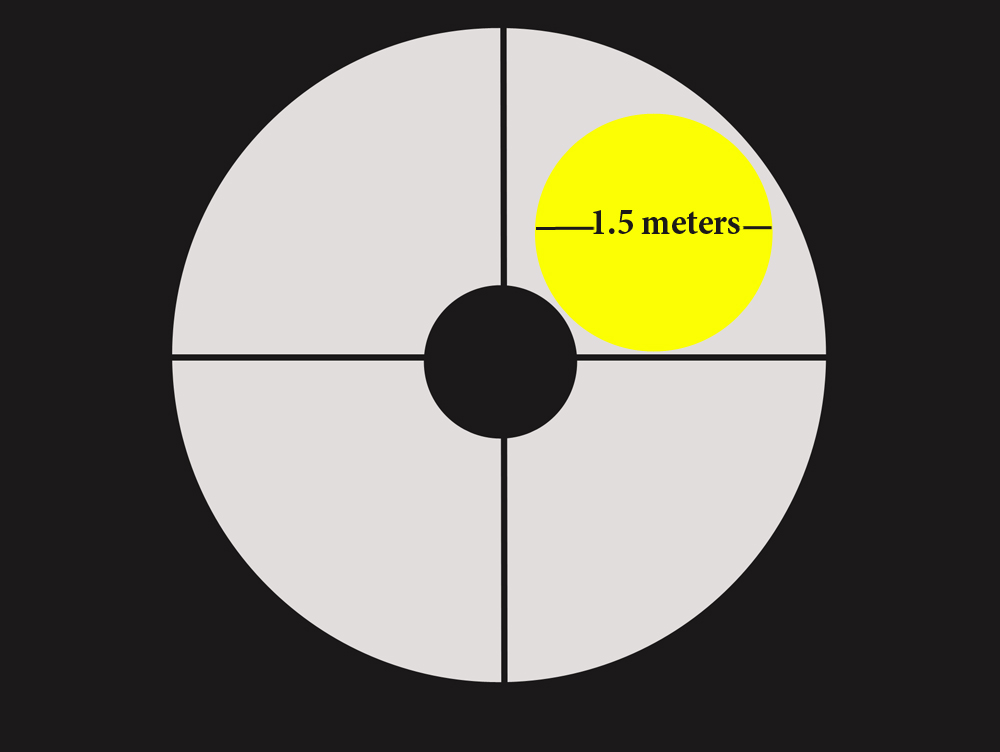Yes, the Hale Telescope's primary mirror is indeed 5.1 meters across. So why would anyone chose to make a big telescope smaller?
If you look at the photo below, you can see that the Hale's prime focus cage, which hangs over the center hole in the mirror is held up by relatively thin "spider vanes" that obstruct small portions of the primary mirror.
 This is a feature of virtually all reflecting telescopes. The astronomers who imaged the planets orbiting the star HR 8799 used an 1.5-meter unobstructed portion of the mirror.
This is a feature of virtually all reflecting telescopes. The astronomers who imaged the planets orbiting the star HR 8799 used an 1.5-meter unobstructed portion of the mirror.Check out the cartoon version below to see what I mean:

The yellow circle represents the portion of the mirror that was used. This avoids any diffraction caused as the light goes past the spider vanes. Further, the adaptive optics system, which normally corrects over the full aperture of the mirror was used to correct over just the 1.5 meter aperture--giving a much higher level of corrections for distortions caused by Earth's atmosphere.
So by effectively making the Hale Telescope smaller, the research team lead by Gene Serabyn was able to achieve results that had previously been obtained by 8 and 10-meter class telescopes.
Cool stuff.



1 comment:
Great news...I love to read about the 63 year old still doing cutting edge discoveries!
Post a Comment